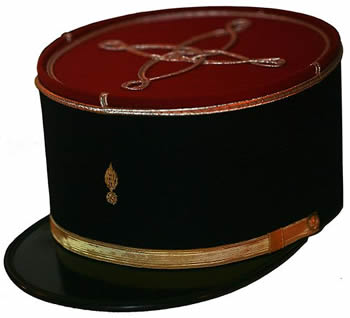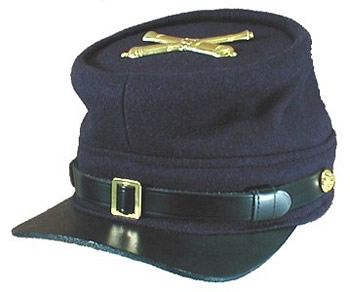Men's Hats, Military Hats
Kepi
French military favourite
 A Kepi is a cap with a flat circular top and nearly horizontal peak. Etymologically, the word is a borrowed from the French Képi, itself a respelling of the Swiss German Alemannic Käppi meaning ‘cap’.
A Kepi is a cap with a flat circular top and nearly horizontal peak. Etymologically, the word is a borrowed from the French Képi, itself a respelling of the Swiss German Alemannic Käppi meaning ‘cap’.
The Kepi was the most common headgear in the French Army with its predecessor originally appearing during the 1830s, during the initial stages of the occupation of Algeria, as a lightweight cane-framed cloth undress caps called casquette d’Afrique. These were an alternative to the heavier, cloth-covered leather French Army shako.
In 1914 most French soldiers wore their kepis to war with a blue grey cover to hide the bright colours of their Kepis. Covered Kepis were first introduced by the Foreign Legion and other North African units who had long worn their Kepis with white covers in the field.
In the United States, the Kepi is associated with the American Civil War and Indian Wars. Union Officers were generally issued Kepis for fatigue use. Similar to the French kepi, it had a sunken top and squared peak. In the North, it was often called the ‘McClellan Cap’ after Union commander of the Army of the Potomac, GB McClellan. Field officers’ Kepis were decorated in a French-influenced style, with a dark velvet band around the base and black silk braiding on the crown.
Kepis also appear with non-military uniforms, particularly popular with railway and tram operators around the world. British Rail employees from the mid 1960s to the mid 1980s wore Kepis.
Famous Kepi wearers
- Charles de Gaulle
- Beau Geste
- Inspector Clouseau
- Phil Silvers
Kepi fancy dress ideas
- French Foreign Legion
- American Civil War
- Pink Panther
- French Gendarme


